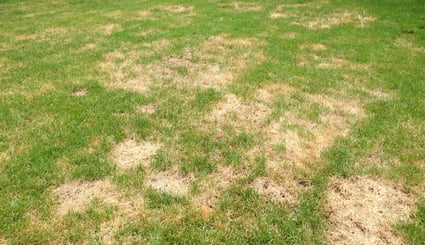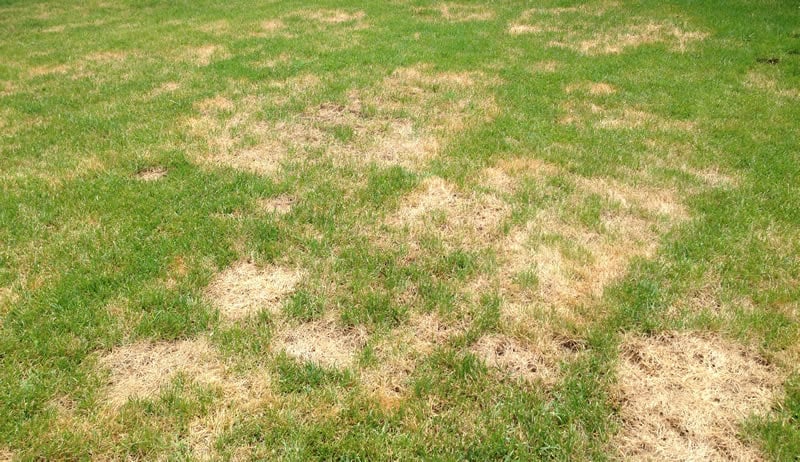You may have noticed some odd patches starting to show in the grass around your home. What is it? Can it be remedied? Though relatively uncommon, some lawns are more susceptible to lawn diseases, especially if good lawn care practices are not followed. While most lawn diseases rear their ugly heads in summer, there are certain ones that appear in the spring.

Fusarium Patch
If your spring has been cool and wet, and you’re noticing brownish circles on your lawn, you could have Fusarium Patch. It would have started out as small reddish-brown spots towards the bottom of the grass blades, but then grew to larger circles, as much as 10 inches in diameter. The center may have been a whitish colour before killing the grass, turning it brown. You may also see a pinkish hue to the edge which is a thread-like part of a fungus called mycelium. If you were to see this disease in the fall, it could increase your risk of getting Pink Snow Mold next spring.
Red Thread
Red Thread also occurs in the damp of spring and looks exactly as it sounds – small reddish threads on the sheath and blade of the grass, although from a distance may just look like it hasn’t been watered enough. Unfortunately, it lives year round in dead leaves, thatch and soil and is carried by spores. It can attack any type of grass, but seems to enjoy lawns made up heavily of ryegrass and fescue, with soil that isn’t very fertile.
Leaf Spot
You’ll start to notice leaf spot as the temperatures rise and the air is humid. It starts out as reddish-brown or purple spots on the grass leaves and as the spot spreads, the inside will turn a tan colour. Eventually, it will turn the entire blade and stem of the grass to the colour of straw and kill it. Kentucky Bluegrass seems to be particularly susceptible to leaf spot as well as lawns that have been mowed too short or recently fertilized without getting enough water.
Ring Patch Diseases
Diseases such as Fairy Ring or Necrotic Ring Spot begin to show in spring and can continue into late fall. Fairy Ring is a fungal disease that starts in a small circle and grows outwards to spots as large as 15 meters in diameter. It appears as a circle of dark green, lush, fast growing grass, with a ring of dead grass outside. Necrotic Ring Spot is a spore disease often found in recently sodded lawns that shows as ring of dead grass with healthy grass inside.
Good lawn practices such as aeration to promote drainage and air circulation, not mowing your grass too short, proper irrigation, dethatching and correctly applying proper fertilizer will help to avoid lawn diseases. In some circumstances, however, it may be too late and the grass will need to be removed. A professional lawn care company like Nutri-Lawn Burlington has the know-how to assess and treat these diseases so they don’t return.
Interested in some of our other professional lawn services please click HERE, or to request a quote please click on the link below!






